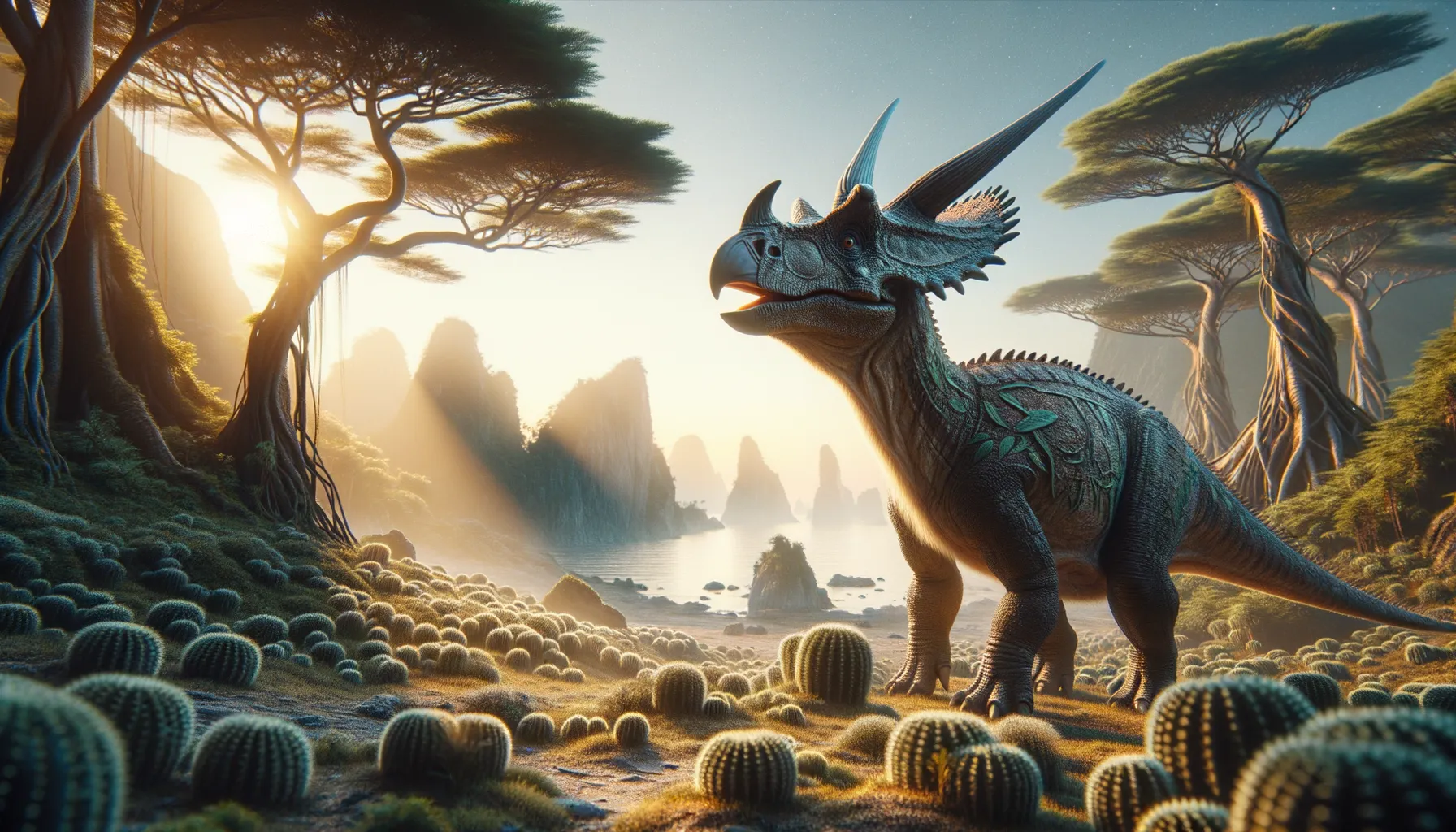
Zhuchengceratops
Small yet enduring herbivore of ancient China.
Period
Cretaceous
Length
Roughly 3 meters long.
Height
About 1 meter tall.
Weight
Approximately 200 kilograms.
Zhuchengceratops was a small herbivorous dinosaur that roamed what is now China during the Late Cretaceous period. It belonged to the ceratopsian group, known for their horns and frilled necks, although this dinosaur was relatively small in size. Its strong beak was well-suited for chewing tough plant matter, indicating a specialized herbivorous diet in its ecosystem.
Diet
Zhuchengceratops was an herbivore, feeding primarily on tough, fibrous plants. Its beak-like mouth allowed it to efficiently strip leaves and vegetation.
Hunting
Being an herbivore, Zhuchengceratops did not hunt. Instead, it foraged for plant materials in its habitat. Its primary focus was on finding and consuming a variety of vegetation.
Environmental challenges
Zhuchengceratops faced challenges such as varying climates and changes in vegetation. Predators in the area also posed a threat, requiring it to rely on its environmental adaptations for survival. Competition for resources with other herbivores would have been a constant challenge in its ecosystem.
Speed
Slow-moving due to its stocky build.
Lifespan
Estimated between 10 to 20 years.
First discovery
Discovered in Shandong, China in 2010.
Fun Facts
- Zhuchengceratops was a smaller relative of the famous Triceratops, living around 70 million years ago.
- It was discovered in the Shandong Province of China, a region rich with dinosaur fossils.
- Zhuchengceratops had a unique frill at the back of its head, although much smaller than its larger relatives.
- Unlike the three horns of Triceratops, Zhuchengceratops had a much simpler skull structure.
- It belongs to a group of dinosaurs called ceratopsians, known for their beaked faces and frilled heads.
- Fossils of Zhuchengceratops help scientists understand the diversity of ceratopsians in Asia.
- Despite its size, Zhuchengceratops was likely an herbivore, feeding on low-lying plants and ferns.
Growth and Development
Like other ceratopsians, Zhuchengceratops likely hatched from eggs and went through a rapid growth phase. This rapid growth helped reach a size where it could better defend itself from predators. The development of its skull and beak would have been crucial for its survival from a young age.
Habitat
Zhuchengceratops lived in a region that was likely lush with vegetation and diverse plant life. The environment could have included forests and open plains, providing ample food sources. The climate was likely warm, supporting an abundance of plant growth throughout the year.
Interaction with other species
Zhuchengceratops possibly shared its environment with other herbivorous and carnivorous dinosaurs. Interactions with predators would have been a critical aspect of its life, influencing behaviors related to defense. It may have also interacted with fellow ceratopsians, which could lead to competition for food resources.
Natural lifespan
Zhuchengceratops had a natural lifespan of approximately 10 to 20 years.
Reproduction
Zhuchengceratops likely laid eggs, as inferred from related ceratopsian species. The eggs would have been laid in nests, and hatchlings would have been cared for until they could fend for themselves. This reproductive strategy is common amongst many dinosaur species.
Social behaviour
Zhuchengceratops may have lived in small groups, using safety in numbers as a strategy against predators. Group living could also aid in locating food and rearing young. Communication amongst ceratopsians might have involved vocalizations or physical displays.
Fossil locations
Zhuchengceratops fossils have primarily been discovered in the Shandong Province of China. This area has revealed numerous specimens, contributing significantly to the understanding of this species. The findings in Shandong confirm its presence in that region during the late Cretaceous period.
